Most people have probably only encountered tamales on the menu at a Mexican restaurant as an alternative to your regular tacos or burritos order, but there is an entirely novel version of these treats that is endemic to Mississippi, specifically the Delta region of the Magnolia State. Hot tamales are so important to Mississippi’s history and culture, in fact, that the Southern Foodways Alliance has created the Hot Tamale Trail, an entire website dedicated to sharing oral histories of the dish and the iconic restaurants that create their personal versions of them. In Greenville, MS, the heart of the region, the annual Delta Hot Tamale Festival celebrates the specialty food with a three-day event that showcases some of the best amateur and restaurant tamale makers in the state as well as the other foods, drinks, music, arts and literature of the storied region. Winning the prize for the best tamale of the fest is the honor of a lifetime as well as being crowned Miss Hot Tamale Queen.
Unlike their Mexican progenitors, Mississippi tamales are often made with cornmeal in lieu of the masa flour used in traditional versions. Delta tamale fillings range from stewed pork, beef, turkey and even venison to vegetarian versions, and parchment paper is sometimes used as a wrapper instead of corn husks. Regardless of the differences between them, both types of tamales are delicious.

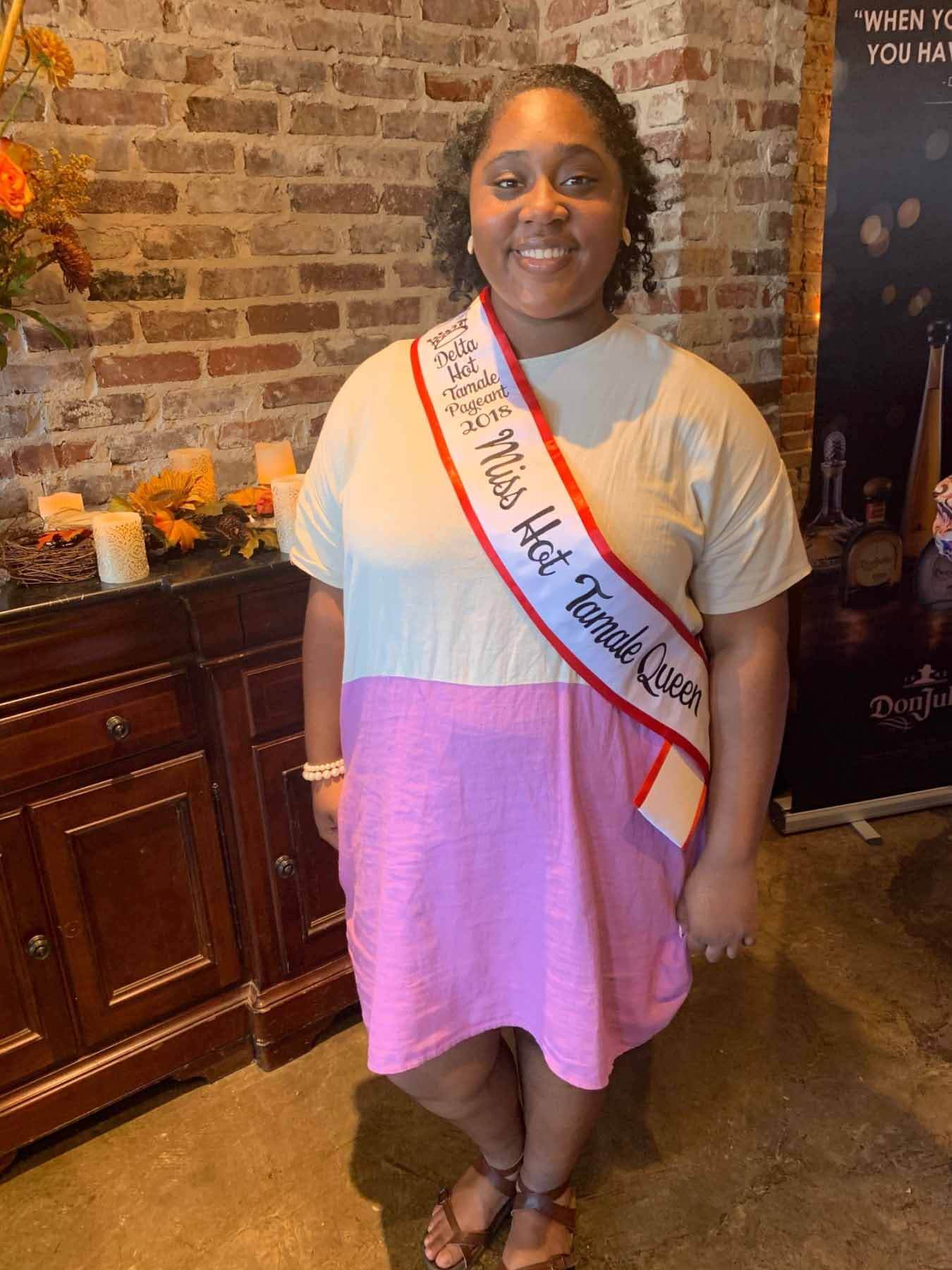
But how did this Latin American specialty food find its way to the flatlands of Mississippi, and why did the recipe evolve along the way? There are a few different suppositions on how the dish passed through Texas and Louisiana to become a Mississippi staple. One theory is that Mexican laborers shared them with enslaved workers in the cotton fields, while another claims that soldiers from Mississippi brought the recipe home with them after fighting in the Mexican-American War in the middle of the 19th century. Another story revolves around a Sicilian immigrant working in Arkansas who discovered the delicacy from his Mexican co-workers in a cane field and decided to open a restaurant to introduce hot tamales to the public. The entrepreneur hired a pair of Black cooks to work in his kitchen, and together this delightful combination of Mexican, Silician and soul food was born.
RELATED: Your Southern BBQ Bible
The truth is probably somewhere in the intersection of these three hazy tales, but the past isn’t nearly as important as the present, because tamales are still ubiquitous in the Delta — on the menus of casual juke joints and fancy restaurants, sold in bulk by the dozen in gas stations and the home kitchens of Mississippians and expats like Jere Myers, a Nashville speech-language pathologist originally from Sunflower, MS.
“I remember tamales from my early childhood,” Jere recalls. “Everybody loved tamales, and you always had them around Christmas. Of course, when Doe’s came in, tamales were always on the menu and you could buy them in bulk. That meant we could have tamales any time we wanted without all the hassle. We didn’t really make them because we could always buy them from different people. There’s a lady in Clarksdale who my mom prefers to buy them from now, but I’ve never really had them because I make my own.”
The “Doe’s” that Jere is referring to is the famous Doe’s Eat Place, a Greenville, MS, fixture since 1941. The modest restaurant is best known for its simple menu: gargantuan steaks meant for sharing, broiled shrimp, a house salad and their beef tamales made using the same recipe as when they opened. Really, what else do you need? Tamales served with hot sauce and crackers as an appetizer, a salad to pretend you’re somewhat healthy and a two-pound (yes, two!) porterhouse plus some shrimp to create your own surf-and-turf for the table — that’s a Delta dream of a meal!
Doe’s has expanded to multiple locations over the years, but the original flagship in a simple cinder block building where you park on the street, walk through the kitchen past an infernal broiler searing the steaks, and sit at communal tables with intentionally mismatched tablecloths and plateware will always be the classic.

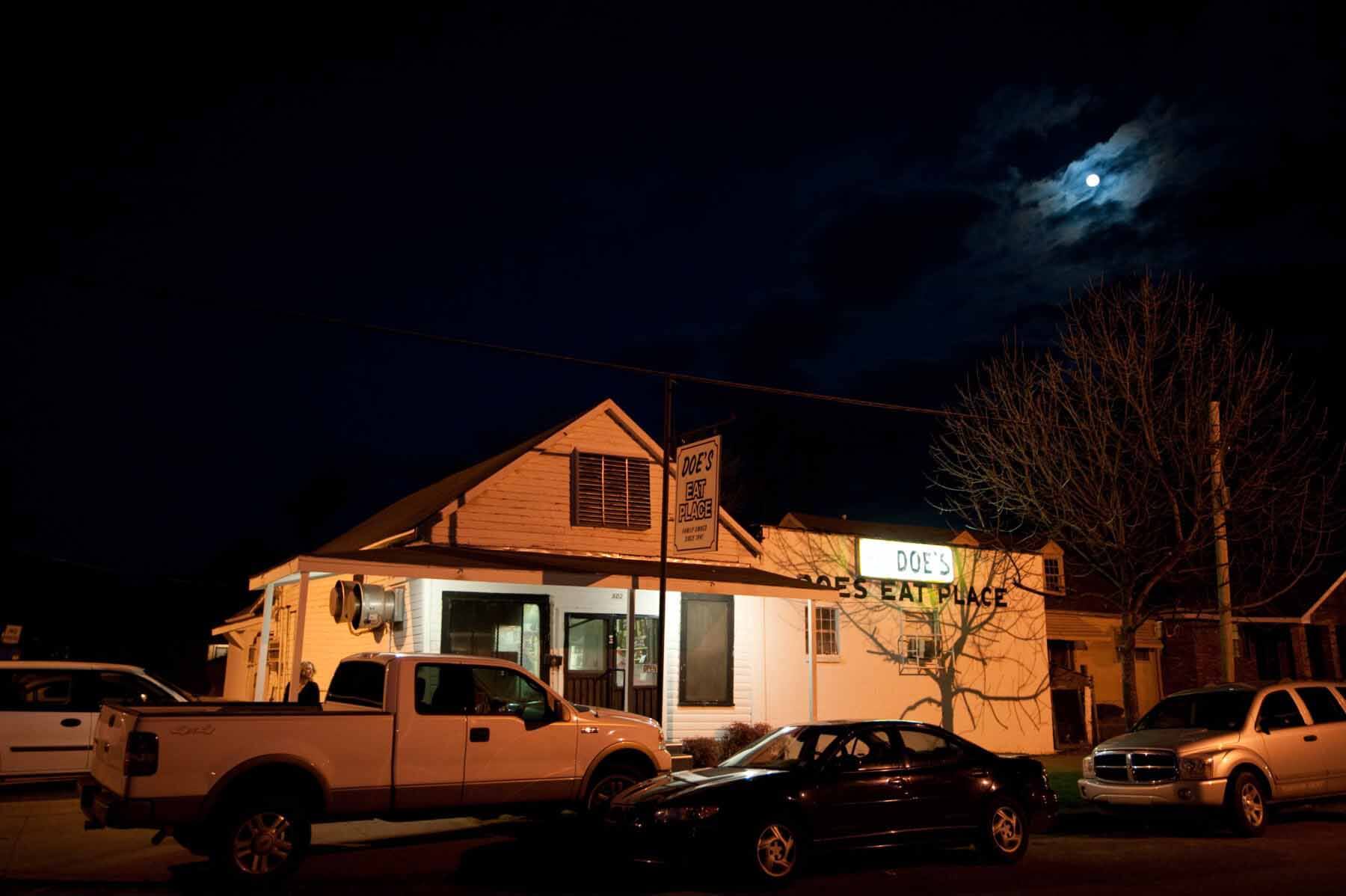
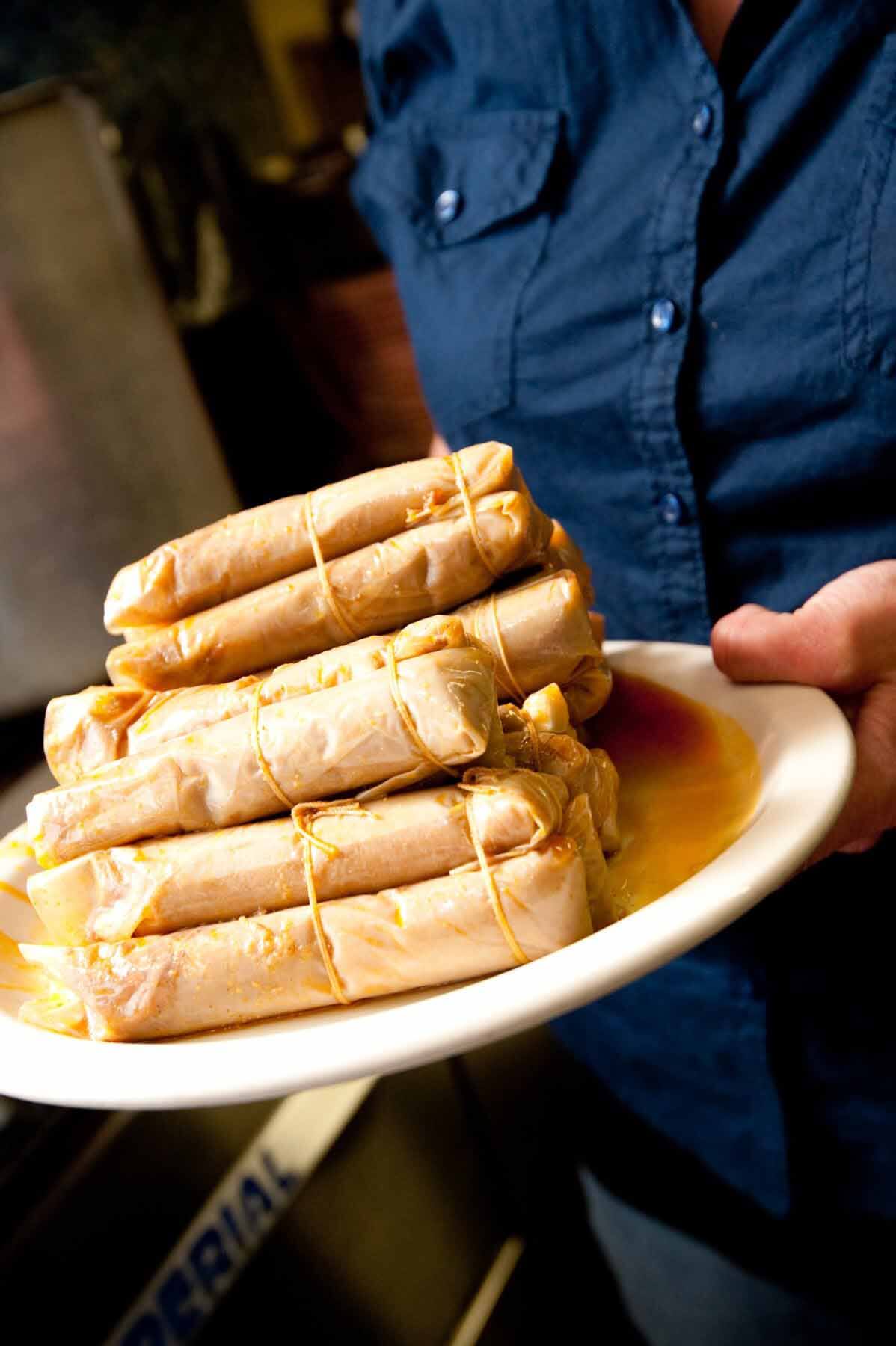
Because tamales come from such a humble history, some of the best spots to find them around Mississippi are also very casual restaurants with their own stories to tell. Dilworth’s Tamales has been a destination in Corinth for almost six decades, selling tamales made from a recipe the original owner purchased in the 1960s from a man who had been selling tamales from a pushcart at the train station for 30 years before then. Dilworth’s is primarily a takeout operation, although you might find a little table and a few chairs outside if you just can’t wait until you get home to tuck into your order of parchment-wrapped, pencil-thin tubes of delectable corn and spicy beef. They come in two varieties, mild and hot, and you’d best know which you prefer before you order because they aren’t kidding about the spice level.
In Clarksdale, diners flock to Abe’s Bar-B-Q, not just for the smoked meats but also for their tamales, served in bundles of three or by the dozen. (In fact, buy the dozen!) Abe’s is the sort of place that stories are told about, and some of them might actually be true. Whether founder Abraham Davis actually was the inventor of the region’s ubiquitous “comeback sauce” or if the restaurant’s former location at the famous crossroads of U.S. 49 and 61 was where blues master Robert Johnson purportedly traded his soul to the devil in return for a short, but iconic career are true stories or not, the tamales at Abe’s are indeed the truth!
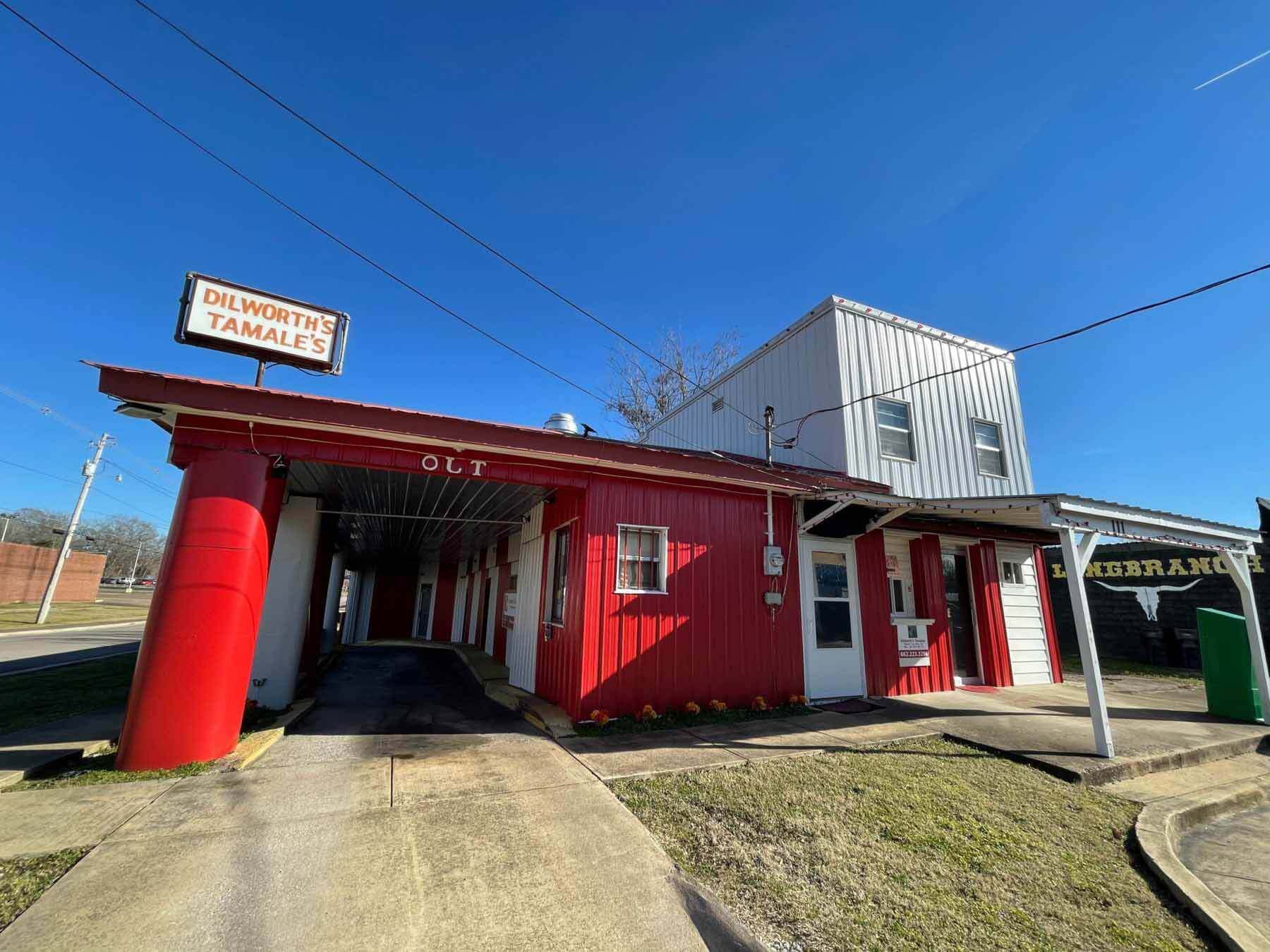
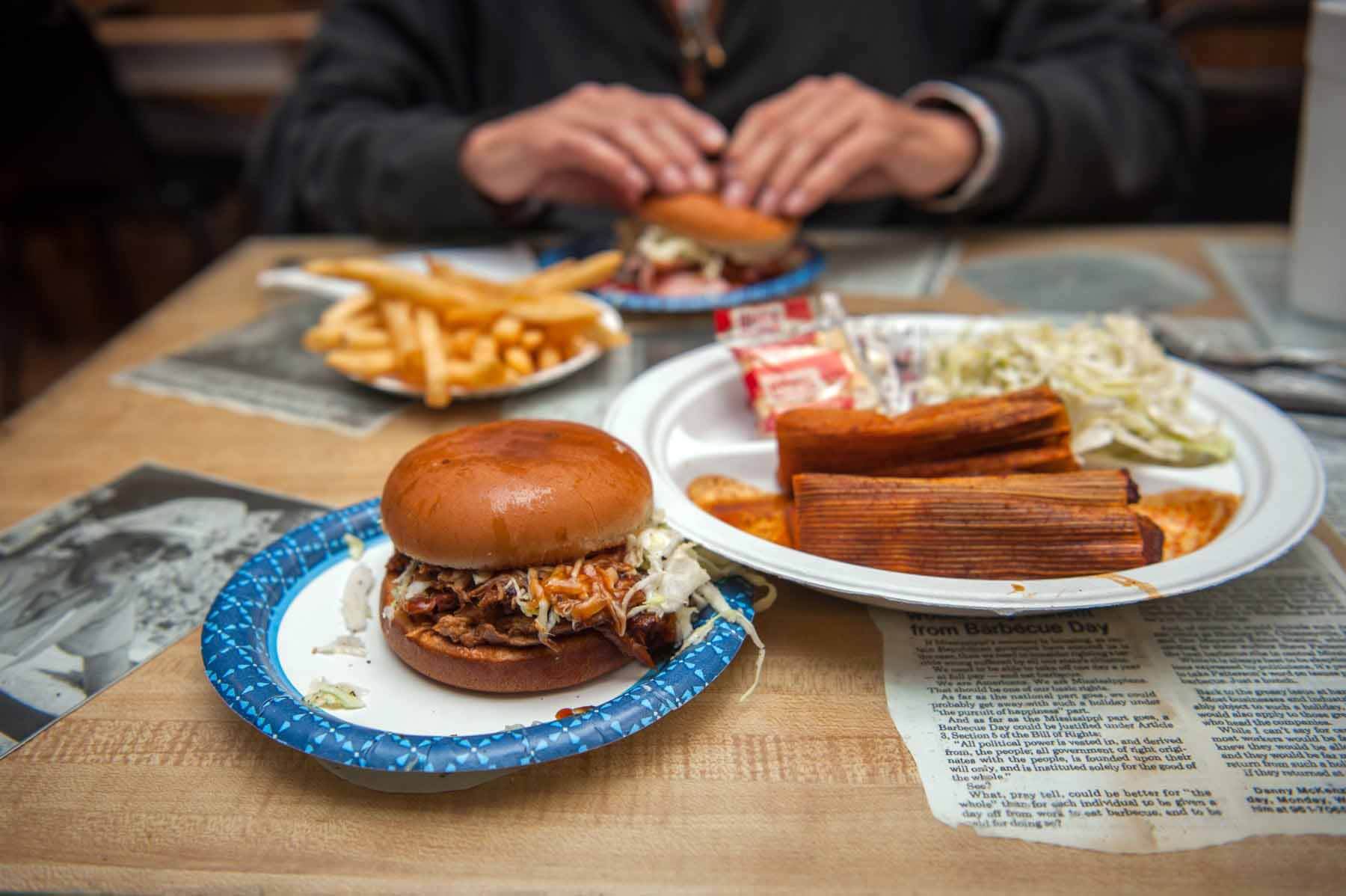
Many Jacksonians are partial to Tony’s Tamales, a tiny brick drive-up shack that is reminiscent of a Fotomat booth for those old enough to remember what those were. Tony’s does a healthy wholesale business, but for the general public, it’s corn husk-wrapped beef, turkey or black bean tamales, hot or mild, sold by the half-dozen or the 12-pack. It’s genius in its simplicity.
Not every restaurant in Jackson that serves tamales is as basic as some of these beloved joints, though. At Walker’s Drive-in, Chef Derek Emerson has converted a nostalgic diner in the historic Fondren neighborhood into an award-winning upscale dining destination. His menu features a popular starter of tamales that combines the dish’s Mexican and Mississippi heritage with the addition of fresh pico de gallo, chipotle-laced sour cream and a sweet corn sauce. Derek is creating a little tamale history of his own.
RELATED: The Fascinating Story Behind Coastal Mississippi’s French Hermit Oyster Co.
For Jere Myers, tamales are more of a family tradition, particularly around the holidays. “They’re always considered part of the holidays,” she shares. “When Paul [my husband] and I had young kids, and we wanted to be able to have a Christmas party and see everybody we loved, that’s when we started doing the MexiCali Christmas party. That was when we started serving the tamales. I feel like it’s a Delta thing. At some point, if you’re going to somebody’s house for dinner around the holidays, you’re going to find some tamales.”
The laborious process of making them requires many hands to stuff, roll, wrap and bundle the little pillows of joy, so Jere recruits her whole family to pitch in. “It’s a family affair,” she explains. “Every year at the end of November, I pull out this well-worn recipe that my mom typed up for me. Once I pull that out, I know that we’re going to have a couple of days where whoever’s willing to help is going to have to help me.”
Jere seasons and cooks her meat and lets it sit for a couple of days to develop the flavors. She prefers cornmeal’s grainier texture instead of the silky masa flour, another nod to her Delta roots. After the cooked meat and cornmeal mixture has percolated in the fridge for a time to marry the flavors, she soaks corn husks in water. “I throw them in the sink to let them get limp so that they can bend and you can roll them. When it’s time to roll, you pour a glass of wine (maybe some whiskey if Paul’s helping), and then you start rolling. I roll and I stack, and usually, Paul or my son Brown tie them up in bundles of three. We spread the newspaper out, so it doesn’t make a huge mess on the counters. It usually takes us about an hour and a half or two, and we can roll up to 13-14 dozen hot tamales and stick them in the freezer to be ready for our holidays.”
Her daughter, Joy Morgan, isn’t what you’d call “an active participant” in the process, though. Jere jokes, “She likes to eat the hot tamales, but she’s not big on rolling the hot tamales. Neither is Brewer [my youngest son], but Brown was always a helper!”
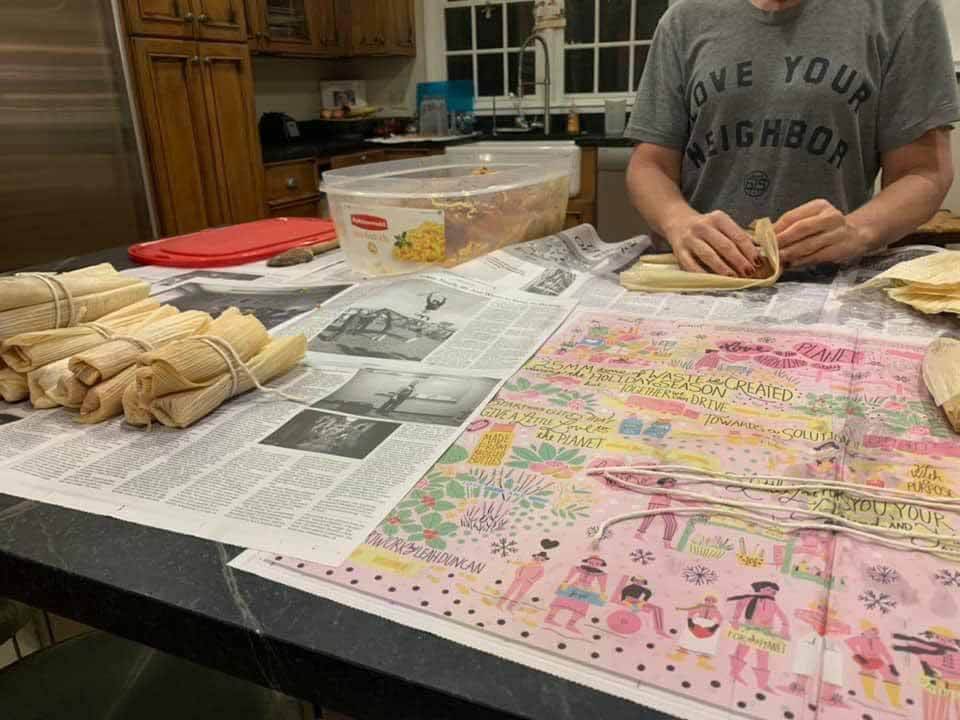
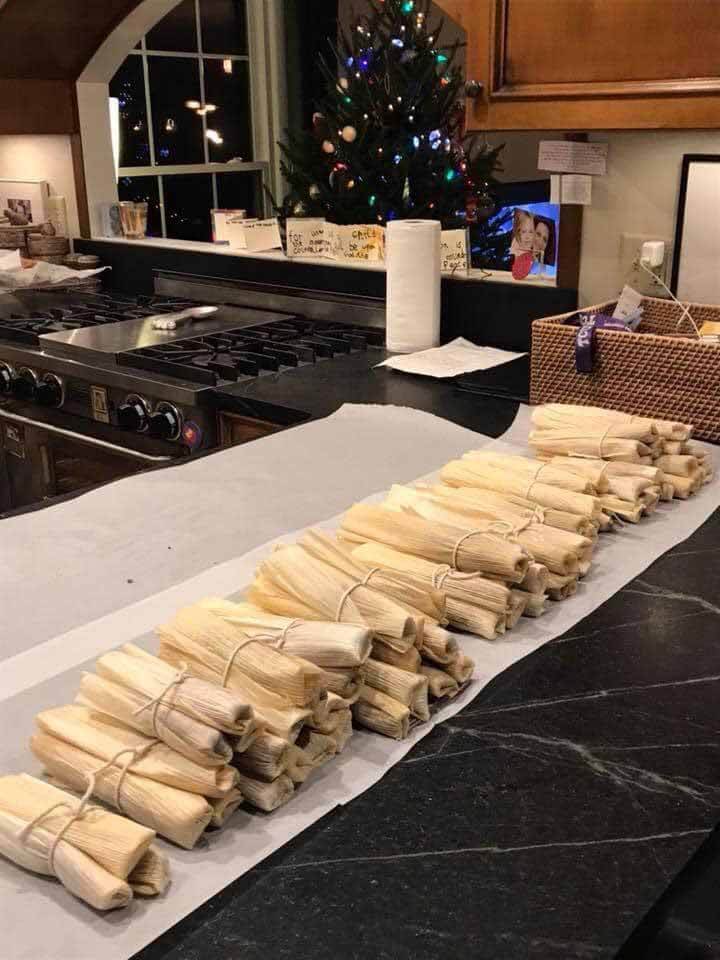
After reheating the tamales slowly by soaking them in a pot of spicy tomato sauce, water, chile sauce, a can of Ro-Tel, red pepper and salt, Jere serves her tamales with a simple presentation of saltine crackers and hot sauce. “That’s how Doe’s does it,” she explains. “So that’s the way we’ve always eaten them. We are very particular when we serve them to only use Tabasco Original sauce. I’m kind of a purist when it comes to Doe’s!”
Jere loves to share her family traditions and Delta heritage with friends. “I’m proud of the tamales I make, and they are certainly a labor of love. When Joy Morgan went vegan and asked me to, I came up with a vegan tamale that took me a lot of time to get the right texture. I worked with lentils and sunflower seeds and things like that.”
Jere sums up her love of tamales this way: “I think that Delta tamales are their own thing. When the kids were little, a nice lady from Honduras brought me tamales, and they were nothing like Delta tamales. They were wrapped in banana leaves and made with the masa flour and had shredded chicken in them. It was just a different version. I think that if you ever get the opportunity to have Delta tamales, it would only enrich you!”
Whether you travel to the Mississippi Delta to discover them at the source or learn to make them at home, tamales are indeed enriching and imbued with the history and culture of the region.
**********
Meet more inspiring people, discover new travel destinations, find delicious recipes and more! Subscribe to StyleBlueprint.



















